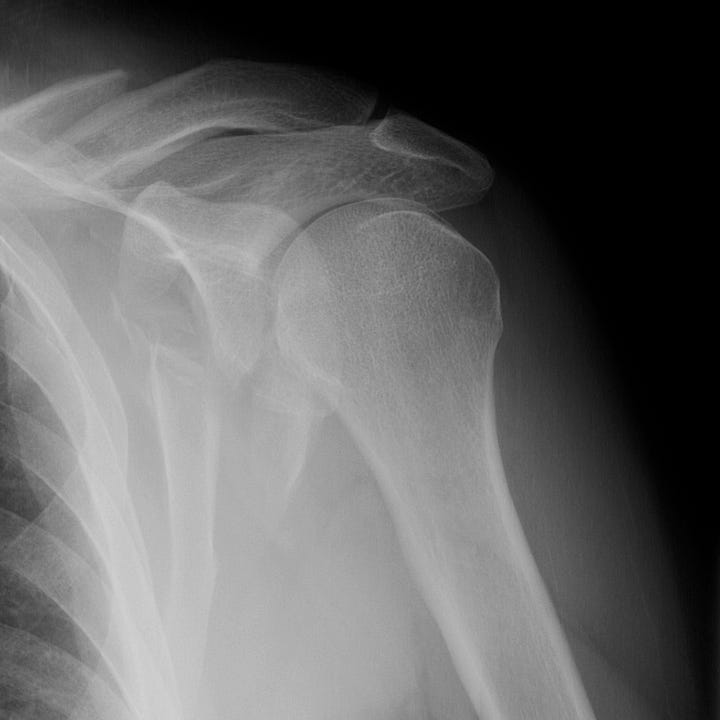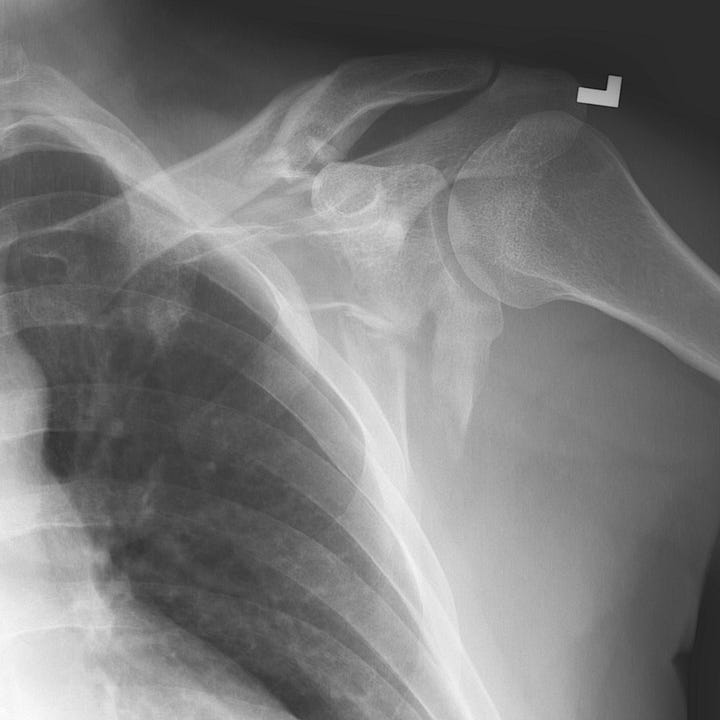Scapular fractures result from direct impact to the shoulder and are usually associated with high-energy mechanisms. Associated torso injuries include pneumothorax, pulmonary contusion, rib fracture, vertebral compression fractures, upper and lower extremity fractures, and injury to upper extremity neurovascular structures (axillary artery and nerve, brachial plexus).
Scapular fractures may be difficult to diagnose on conventional radiographs but are easily appreciated on chest CT. They are described as body, spine, acromion, coracoid, scapular neck, and glenoid fractures. Fragment displacement is usually minimal due to the supporting muscles and periosteum. Unless the glenoid fossa is involved, most scapular fractures are managed nonoperatively. Fractures that extend to the articular surface may require operative reconstruction.


Comminuted scapular body fracture with extension to glenoid articular surface. Associated mid- clavicular fracture. Normal glenohumeral, acromioclavicular, and coracoclavicular relationships.

